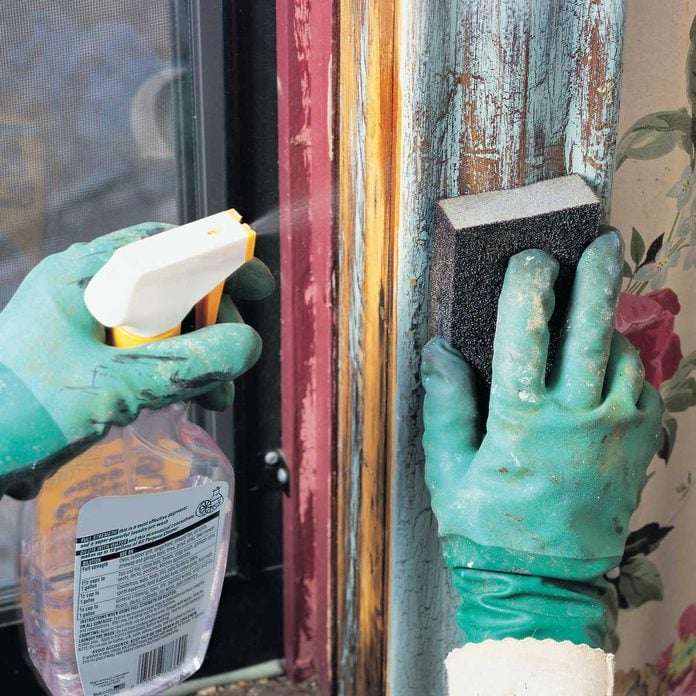How To Dispose Of Lead Paint Chips
Lead paint was commonly used in homes and buildings before it was banned in 1978 due to its health hazards. When lead paint is disturbed, it can create lead paint chips that can be hazardous if not disposed of properly. The improper disposal of lead paint chips can contaminate the environment and pose a serious risk to human and animal health. Therefore, it is crucial to dispose of lead paint chips safely and responsibly.
In this article, we will provide a comprehensive guide on how to dispose of lead paint chips safely and responsibly. We will discuss the hazards of lead paint and its effects on human health. We will also provide tips on how to identify and collect lead paint chips and the necessary precautions to prevent lead exposure during the collection and disposal of lead paint chips. Additionally, we will discuss the proper methods of disposing of lead paint chips, including taking them to a hazardous waste facility or participating in a local hazardous waste pickup program.
Get the Fail-Safe Paint Color Playbook (Free PDF)
36 proven colors • 8 ready palettes • trim & sheen guide • printable testing cards.
By following the steps outlined in this article, you can safely and responsibly dispose of lead paint chips and protect yourself, your family, and the environment from the hazards of lead exposure.

Understanding Lead Paint and Its Hazards
Lead paint is a type of paint that contains lead as an additive. Lead is a toxic metal that can cause serious health problems when ingested or inhaled. When lead paint chips are not properly disposed of, they can contaminate the soil, air, and water, and pose a risk to human and animal health.
The health effects of lead exposure can be severe, particularly in children and pregnant women. Lead exposure can cause developmental delays, behavioral problems, learning disabilities, and even death. It is important to take the necessary precautions to protect yourself, your family, and the environment from the hazards of lead paint chips.
How to Identify and Collect Lead Paint Chips
Before you can properly dispose of lead paint chips, you need to identify where they are located and how to safely collect them. Lead paint chips can be found on walls, ceilings, doors, windows, and other painted surfaces. To identify lead paint chips, you can use a lead test kit, which is available at most hardware stores.
When collecting lead paint chips, it is important to take the necessary precautions to protect yourself and others from lead exposure. Wear gloves, a mask, and protective clothing to prevent contact with the chips. Use a damp cloth to wipe up the chips, and avoid sweeping or vacuuming, as this can create dust that can be inhaled.
How to Dispose of Lead Paint Chips
Once you have collected the lead paint chips, it is important to dispose of them safely and responsibly. The best way to dispose of lead paint chips is to take them to a hazardous waste facility. Most municipalities have hazardous waste collection sites where you can drop off your lead paint chips for safe disposal.
Get the Fail-Safe Paint Color Playbook (Free PDF)
36 proven colors • 8 ready palettes • trim & sheen guide • printable testing cards.
Before disposing of the lead paint chips, it is important to take the necessary precautions to prevent them from contaminating the environment. Wet the chips down with water to prevent dust from being created during transport. Seal the chips in a plastic bag, and label the bag as containing lead paint chips. Keep the bag away from children and pets, and store it in a cool, dry place until it can be taken to a hazardous waste facility.
If you have only a small amount of lead paint chips, you may be able to dispose of them through a local hazardous waste pickup program. Contact your local waste management authority to see if they offer this service.
Other Considerations for Lead Paint Removal
Proper disposal of lead paint chips is just one aspect of lead paint removal. If you are planning to renovate or demolish a building that contains lead paint, it is important to take the necessary precautions to prevent lead exposure. This may include hiring a professional lead abatement contractor, or taking safety precautions if you plan to do the work yourself.
When removing lead paint, it is important to follow proper safety procedures to prevent lead exposure. Wear protective clothing, gloves, and a mask, and avoid creating dust or debris that can be inhaled. Keep children and pets away from the work area, and seal off the area to prevent the spread of dust.
Conclusion
In conclusion, proper disposal of lead paint chips is important to protect yourself, your family, and the environment from the hazards of lead exposure. By following the steps outlined in this article, you can dispose of lead paint chips safely and responsibly. Remember to take the necessary precautions to prevent lead exposure during the collection and disposal of lead paint chips, and to properly label and store the chips until they can be taken to a hazardous waste facility. If you are planning to renovate or demolish a building that contains lead paint, it is important to take the necessary precautions to prevent lead exposure. This may include hiring a professional lead abatement contractor, or taking safety precautions if you plan to do the work yourself. Remember that lead exposure can cause serious health problems, particularly in children and pregnant women, so it is important to take the necessary precautions to protect yourself and others from the hazards of lead paint.
